This article was co-authored by Jurdy Dugdale, RN and by wikiHow staff writer, Amy Bobinger. Jurdy Dugdale is a Registered Nurse in Florida. She received her Nursing License from the Florida Board of Nursing in 1989.
wikiHow marks an article as reader-approved once it receives enough positive feedback. In this case, 88% of readers who voted found the article helpful, earning it our reader-approved status.
This article has been viewed 218,188 times.
If you have to use supplemental oxygen, a nasal cannula fits into your nose to deliver the oxygen into your system, which means you won't have to wear a bulky mask. If you choose the correct size and insert the cannula properly, it should rest comfortably in your nostrils, but improper insertion can lead to discomfort and chafing. Luckily, it's easy to apply a nasal cannula, and there are several ways to relieve some of the more common complaints that may come from wearing one.
Steps
Applying the Nasal Cannula
-
1Make sure you have the right size cannula. Most brands of cannulae come in infant, pediatric, and adult sizes, so select the one that best fits you for your size. The cannulae should fit snuggly in your nostril so that it doesn't come out, but it shouldn't be so long that goes far back into the nostril. Some brands may have extended sizes, such as small, medium, and large for adults, and premature through pediatric for children, giving you more options. In this case, choose the one that feels the most comfortable when placed in your nostrils.[1]
- If the cannula is rubbing uncomfortably against your nostrils, it may be too large.
- If it's pinching, it may not be the correct size.
-
2Attach the end connector to the oxygen source. At one end of the nasal cannula tube, you’ll see a connector that hooks onto your oxygen tank or converter. Slip the connector over the end of the oxygen line coming from your tank to connect the nasal cannula.[2]
- Make sure the connector is seated tightly onto the oxygen line so none of the gas can escape. Place the connection against your arm to feel for any leaking oxygen. You may also be able to smell escaped oxygen.
Advertisement -
3Adjust the amount of oxygen that flows through the tubes. Your healthcare provider will prescribe a flow rate for you. Turn the knob on the machine so that the dial is set to this exact number every time, and do not change it unless your doctor tells you to.[3]
- Changing the flow rate could result in you getting more or less oxygen than you need, which could lead to health complications. Try using a pulse oximeter to monitor your oxygen. If it's always at 100%, turn your oxygen down a little.
-
4Turn the cannula so the prongs are curved downward. Most cannulae today have curved prongs so they fit more naturally inside the nostrils. Hold the cannula so the prongs are pointing up toward the ceiling and curve down toward you.[4]
- If the cannula does not have curved prongs, just hold it so the prongs are pointed upward and angled toward your body.
-
5Insert the prongs into your nostrils. Place the cannula in as far as it will go. If the cannula is properly connected, you will feel a gentle flow of air. If it's the proper size, the prongs should sit comfortably in your nostrils.[5]
-
6Lift the tubes and fit them over your ears. Make sure the tubes that connect the nasal prongs to the oxygen delivery system are fitted snugly over your ears. This will help hold the cannula in place, even if you’re moving around or sleeping.[6]
- If having the tubes looped behind your ears is uncomfortable, you may prefer to rest the headset behind your head. Instead of looping the tubes over your ears and under your chin, turn the cannula so the tubes go from your nostrils down toward the back of your neck, with the slider resting at the base of your neck.[7]
-
7Move the slider up the tubes to adjust the fit. The slider is the small piece on the tubes which you can move up and down to tighten or loosen the headset. Push the slider up until it is just under your chin.[8]
- The headset should be snug, but you still should be able to fit two fingers between the tubes and your chin. If the cannula causes indents in your skin, it is too tight.[9]
Solving Common Comfort Issues
-
1Wrap fabric tape close to your ears to make the tubes more comfortable. Friction from the tubes can cause irritation against your skin, especially if you have to wear your nasal cannula for long periods of time. Wrap the fabric medical tape near your ears can help minimize friction and keep the tubes in place.[10]
- Double-wrap the fabric tape where the tube rests against your face to help reduce friction even further.
- You can purchase fabric first aid tape at any drug store.
- If your tubes cause frequent irritation, try using a softer, thinner tubing.
-
2Adjust the tubes so they rest higher on your cheeks to ease irritation. Wearing the tubes higher on your cheekbones will decrease the friction against your skin as you move. To do this, keep the tubes tightened so the slack doesn’t drag them down.[11]
- Move the slider higher up the tubes to help keep the slack out of the line.
- As with the ears, you can use a small piece of medical tape in this situation to help minimize the friction against your skin.
-
3Use a saline spray if your nostrils become dry. The constant flow of air may sometimes dry out your nasal passages. If this happens, use a simple saline spray to add moisture back. [12]
- You can use these products as needed.
- If you're having a lot of problems with dryness, you can set up a humidifier to add moisture into the air around you. In some cases, you can even attach a humidifier directly to your oxygen.
Caring for the Cannula
-
1Replace the cannula every day. Nasal cannulas are designed to be disposable and should be replaced every day. This helps prevent the growth of bacteria and ensures that you are always using functional, high-quality tubing.[13]
-
2Place the cannula in a glass of water to tell if the oxygen is flowing. If you can’t feel any air coming out of the nasal prongs, submerge them in a glass of water. If the nasal cannula is working properly, you should see bubbles coming up through the water.[14]
- If you don't, check to make sure the oxygen is turned on and the tubing is not bent or blocked. If it still doesn’t work, contact your medical provider.
- If you are struggling with your cannula, try a pulse oximeter check to make sure you are not low on oxygen. If you are, go to the emergency room.
Warnings
- Stay away from open flames, heat sources, or electrical equipment that may cause a spark while you're using your oxygen delivery system, or you run the risk of combustion.[15]⧼thumbs_response⧽
- Do not smoke when you are using your oxygen delivery system, and ask your friends and family not to smoke around you.[16]⧼thumbs_response⧽
- Do not use oil-based products such as petroleum jelly around your mouth or nose while using your oxygen machine, as they can be flammable when mixed with pure oxygen.[17]⧼thumbs_response⧽
- Call your healthcare provider or use your EMT call button right away if you notice that your skin looks pale, your lips or fingernails look blue, you experience confusion, restlessness, anxiety, shortness of breath, or chest pain.[18]⧼thumbs_response⧽
References
- ↑ https://www.salterlabs.com/media/resources/SLML-130_Homecare_Nasal_Cannula_Technical%20Bulletin.pdf
- ↑ https://www.salterlabs.com/media/resources/SLML-130_Homecare_Nasal_Cannula_Technical%20Bulletin.pdf
- ↑ https://www.salterlabs.com/media/resources/SLML-130_Homecare_Nasal_Cannula_Technical%20Bulletin.pdf
- ↑ https://healthfully.com/wear-nasal-cannula-comfortably-2083661.html
- ↑ https://healthfully.com/wear-nasal-cannula-comfortably-2083661.html
- ↑ https://healthfully.com/wear-nasal-cannula-comfortably-2083661.html
- ↑ https://www.salterlabs.com/media/resources/SLML-130_Homecare_Nasal_Cannula_Technical%20Bulletin.pdf
- ↑ https://healthfully.com/wear-nasal-cannula-comfortably-2083661.html
- ↑ https://www.salterlabs.com/media/resources/SLML-130_Homecare_Nasal_Cannula_Technical%20Bulletin.pdf
- ↑ https://healthfully.com/wear-nasal-cannula-comfortably-2083661.html
- ↑ https://healthfully.com/wear-nasal-cannula-comfortably-2083661.html
- ↑ https://www.salterlabs.com/media/resources/SLML-130_Homecare_Nasal_Cannula_Technical%20Bulletin.pdf
- ↑ https://www.salterlabs.com/media/resources/SLML-130_Homecare_Nasal_Cannula_Technical%20Bulletin.pdf
- ↑ https://www.mountnittany.org/articles/healthsheets/2997
- ↑ https://www.salterlabs.com/media/resources/SLML-130_Homecare_Nasal_Cannula_Technical%20Bulletin.pdf
- ↑ https://www.salterlabs.com/media/resources/SLML-130_Homecare_Nasal_Cannula_Technical%20Bulletin.pdf
- ↑ https://www.mountnittany.org/articles/healthsheets/2997
- ↑ https://www.mountnittany.org/articles/healthsheets/2997
About This Article
To properly insert a nasal cannula, attach the end connector to the oxygen source and adjust the knob that controls the flow of oxygen. Hold the cannula so the prongs are pointing upward and are curved toward you, then gently insert them into your nose. Loop the tubes over your ears and adjust the slider so the tubes fit snugly under your chin. To learn how to clean and care for your nasal cannula, read on!
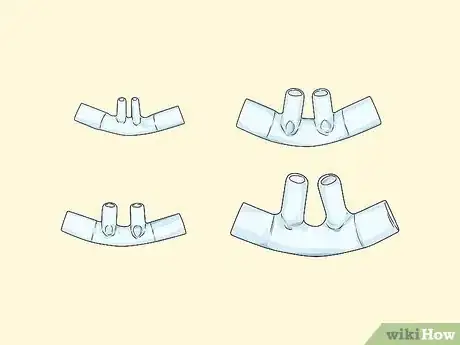
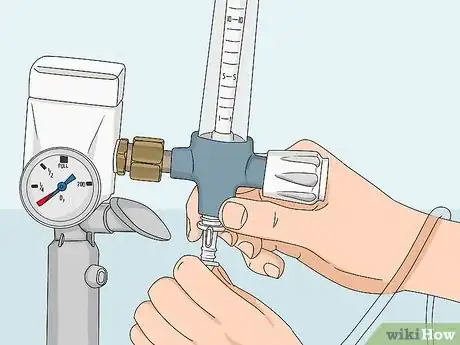
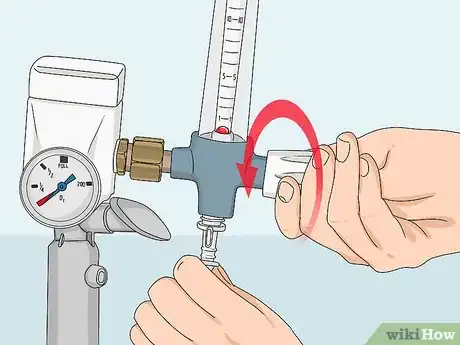
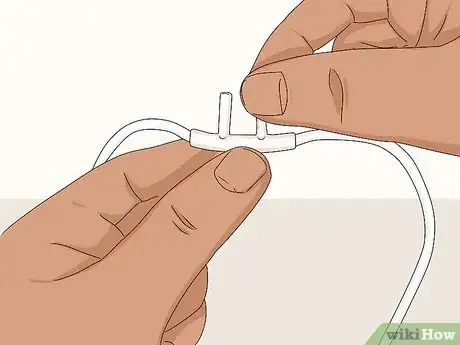

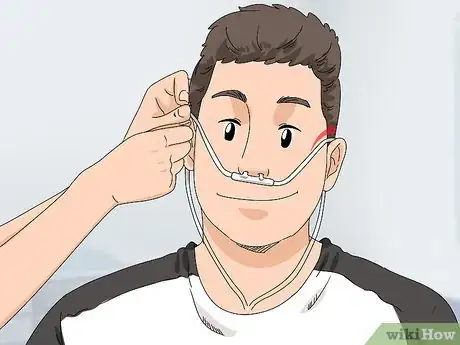
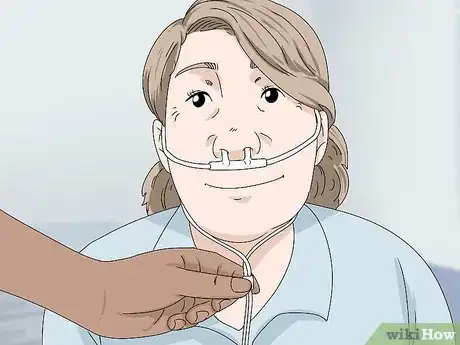
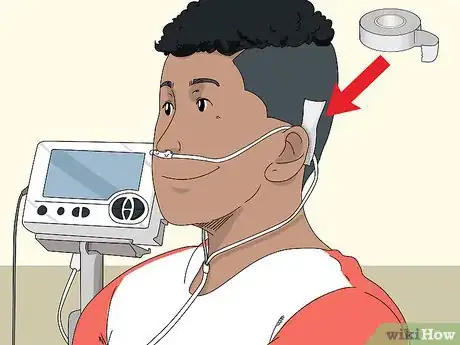


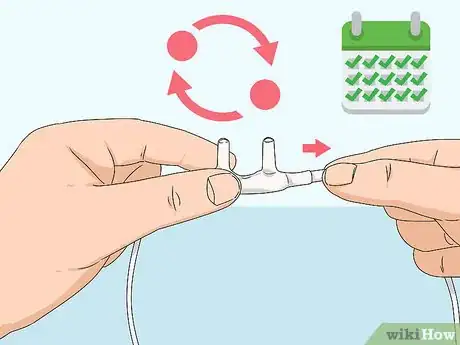
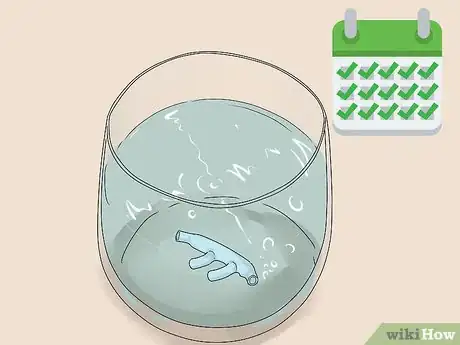










-Tube-Step-17.webp)




















































Medical Disclaimer
The content of this article is not intended to be a substitute for professional medical advice, examination, diagnosis, or treatment. You should always contact your doctor or other qualified healthcare professional before starting, changing, or stopping any kind of health treatment.
Read More...